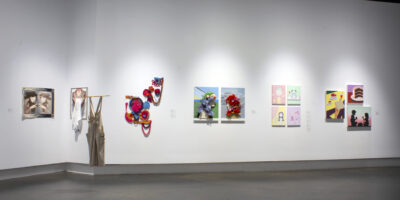I’m sure you’re all familiar with the modern day celebration of Halloween: Dress up in costumes to get free candy, perhaps carve a jack-o-lantern or two, or just throw a massive costume party with all your friends. But have you ever wondered how this holiday came about? Here at the Iron Warrior, we’re going to take you around the world and across time to tell you all about the origins of this wonderful holiday!
This holiday takes its roots from the Celtic festival of Samhain, so it is here that we shall start. This is a harvest festival to celebrate the end of summer, being quite popular all across Ireland for many centuries. It marks the end of the harvest and the beginning of winter. During this time, the door to “the Otherworld” was opened wide enough for souls of the dead to emerge. This also allowed other creatures such as fairies back into the world. These souls and fairies were beckoned to attend the feats, with a place set for them. However, not all fairies were good. Sometimes there were harmful spirits, which were also able to come back to this world. People took steps to ward off these spirits. Now-a-days children simply dress up as these creatures from the Otherworld, ghosts, ghouls, and zombies, and enjoy the bonfires.
The tradition of collecting candy may have also come about from this festival. In the 19th century, it was custom for a man dressed as a white mare to lead the youths from door-to-door; however back then they were collecting food for the feasts and wood for the fires instead of the candy we collect now.
In Scotland, the festival was very similar to Ireland’s because of the shared cultural heritage, however with a few differences. In order to scare away the faeries and evil spirits, children used to carry candle-lit lanterns carved with devilish faces to attempt to frighten away the spirits. These lanterns used to be made from turnips; in modern times pumpkins are used because of their relative ease of carving. The Scottish festival also includes a game called apple “dooking”, or more commonly known, bobbing for apples.
In England, Halloween has an entirely different meaning and celebration. Here it is more commonly spelled Hallowe’en, an abbreviation of Hallow and Eve, because this festival was celebrated as the day before All Hallows Day. All Hallows Day was also known as All Saints Day or All Souls Day. On the evening before, it was custom that families would stay up late and light candles to guide souls back to visit their earthly homes. While staying up late, children would go door to door singing songs and prayers for the dead; in return they would receive little soul cakes, a traditional food of the holiday. This is another possible origin for modern trick-or-treating.
While Halloween didn’t originate in North America, it has had an interesting history here within its few centuries. Arriving in North America due to Scottish and Irish immigration, the festival took after the traditional pagan one in the late 1800’s. While all the traditional customs were still honoured they took a newer spin. The children going around in disguise reciting rhymes transformed into the customary “Trick or Treat”, in costumes we know today. However, such a saying was soon taken too literal.
At the turn of the 19th century, Halloween had digressed into a night of vandalism, destruction, and cruelty. Instead of going from door to door receiving treats, people would go around spreading mischief and playing pranks on them. This got so out of hand, that there was a movement for a “Sane Halloween”, something that would prevent the mischief and chaos the night brought. The term “Beggers Night” came about, bringing the traditions back onto the track of begging for candy instead of destroying property.
In many places around the world, especially around Asia, Halloween is still a relatively new tradition, having only arrived within the past 50 years or so and in the form of American pop culture. Because of that, it is very similar to the commercialized holiday we all know and love today.
And that, my friends, is how Halloween came about, and how all the modern day traditions developed differently around the world, most commonly coming from the Celtic festival of Samhain. So whether you’re collecting candy, partying hard, or both, keep in mind the original roots of this celebration; both a harvest festival, and a festival of the dead.




Leave a Reply